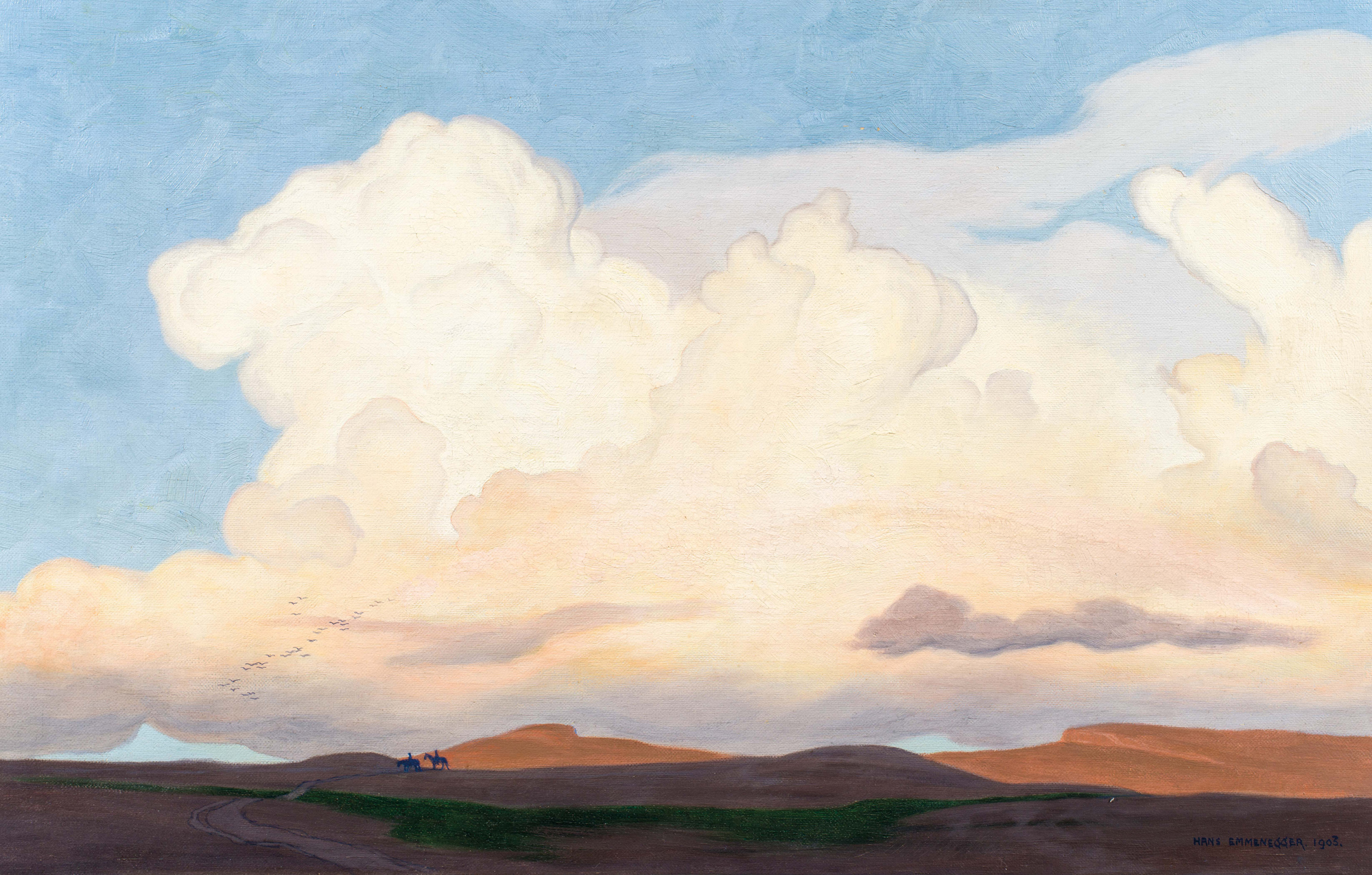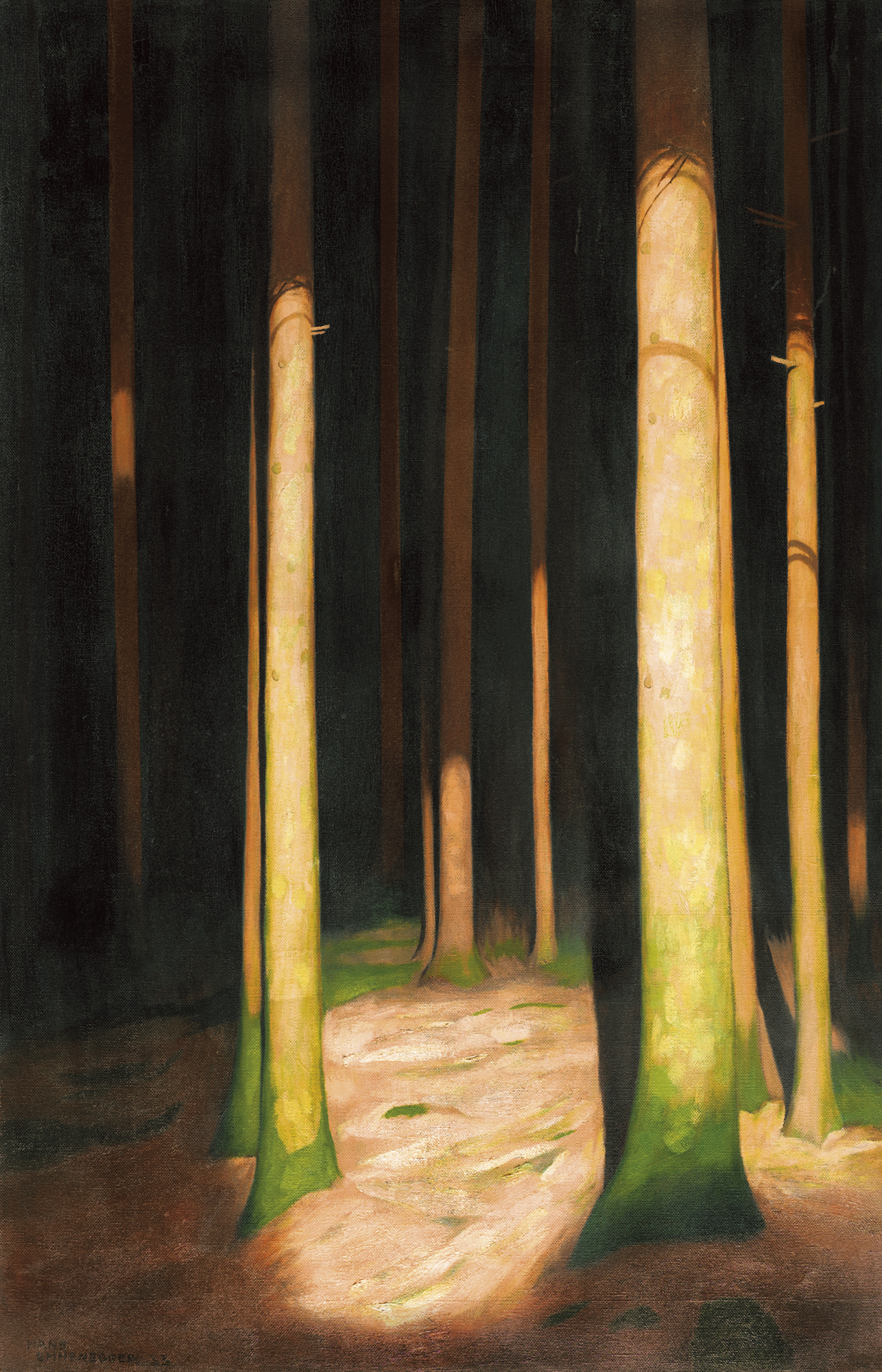Appreciated by a small circle of specialists but almost unknown by the broader public until today, Hans Emmenegger proposed at the start of the 20th century stylised compositions on subjects that were actually novel for the time.
Following courses at Lucern’s Kunstgewerbe-schule, and studies in Paris at the Académie Julien, he completed his training in Germany at the Münchner Akademie.
Emmenegger devoted himself to plein-airism, to painting outdoors. In the late 19th century, a vocabulary akin to that of Arnold Böcklin can be seen in his landscapes, which are still steeped in Romanticism. Gradually, however, a taste for the decorative aspect of Art nouveau, as well as references to the work of Ferdinand Hodler, surfaces in his compositions.
Spare and done in small formats, the paintings of the early 20th century offer tightly framed and at times fairly novel motifs – the shadow of a tree, a blackbird, an apple or gourd – whose sharply delineated forms stand out from the background. The care Emmenegger lavishes on the play of chiaro-scuro contrasts is seen in an emphatic lighting that produces cast shadows and glints on the surface of the water.
The choice of unusual viewpoints lends his compositions a static, supernatural dimension. The atmosphere of oddity and uncanniness that looms up from these depictions is further emphasised by a dissonant chromaticism applied almost without gradations. Far from the use that his friends Cuno Amiet and Giovanni Giacometti made of colour, which produces a light-filled atmosphere in their work, Emmenegger freely dramatised his compositions and selected his colours according to the contrasts he wanted to obtain.
Around 1914-1915 his painting took off in a new direction and the artist destroyed many earlier works. Now influenced by chronophotography, he paid especial attention to the depiction of movement and the instant.
Whilst Emmenegger was a passionate collector, philatelist and player in cultural politics of the day, the general public knew precious little of his painting. It was only a few discerning critics, notably René Magritte, who managed to grasp the modern dimension of his work.
Following courses at Lucern’s Kunstgewerbe-schule, and studies in Paris at the Académie Julien, he completed his training in Germany at the Münchner Akademie.
Emmenegger devoted himself to plein-airism, to painting outdoors. In the late 19th century, a vocabulary akin to that of Arnold Böcklin can be seen in his landscapes, which are still steeped in Romanticism. Gradually, however, a taste for the decorative aspect of Art nouveau, as well as references to the work of Ferdinand Hodler, surfaces in his compositions.
Spare and done in small formats, the paintings of the early 20th century offer tightly framed and at times fairly novel motifs – the shadow of a tree, a blackbird, an apple or gourd – whose sharply delineated forms stand out from the background. The care Emmenegger lavishes on the play of chiaro-scuro contrasts is seen in an emphatic lighting that produces cast shadows and glints on the surface of the water.
The choice of unusual viewpoints lends his compositions a static, supernatural dimension. The atmosphere of oddity and uncanniness that looms up from these depictions is further emphasised by a dissonant chromaticism applied almost without gradations. Far from the use that his friends Cuno Amiet and Giovanni Giacometti made of colour, which produces a light-filled atmosphere in their work, Emmenegger freely dramatised his compositions and selected his colours according to the contrasts he wanted to obtain.
Around 1914-1915 his painting took off in a new direction and the artist destroyed many earlier works. Now influenced by chronophotography, he paid especial attention to the depiction of movement and the instant.
Whilst Emmenegger was a passionate collector, philatelist and player in cultural politics of the day, the general public knew precious little of his painting. It was only a few discerning critics, notably René Magritte, who managed to grasp the modern dimension of his work.

